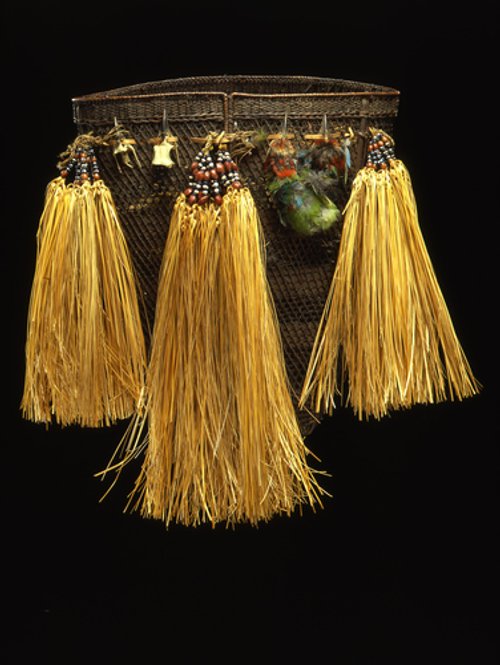Der Korb besteht aus einem Geflecht von Pflanzenfasern (Bambus und/oder Rotang). Daran sind als Verzierung Grasbüschel, Samenkapseln und Glasperlen sowie vier Vogelbälge befestigt. Der Kriegerkorb wird als Ritualkorb bei Kopfjagdtänzen verwendet. Benutzt wurde er von den damals so genannten Naga-Gruppen der Banpara, Joboka und Sangloi. Heute werden diese Gruppen als Wancho, Nocte oder Konyak-Naga bezeichnet.
Karteikarte : Dengsa, Männerkorb für Naga von Banpara Joboka und Sangloi; brauner Korb, verziert mit vier Vogelbälgen (von denen nur einer annähernd vollständig erhalten ist) und Grasbüscheln.
Sammler: Peal, S.E.
en

